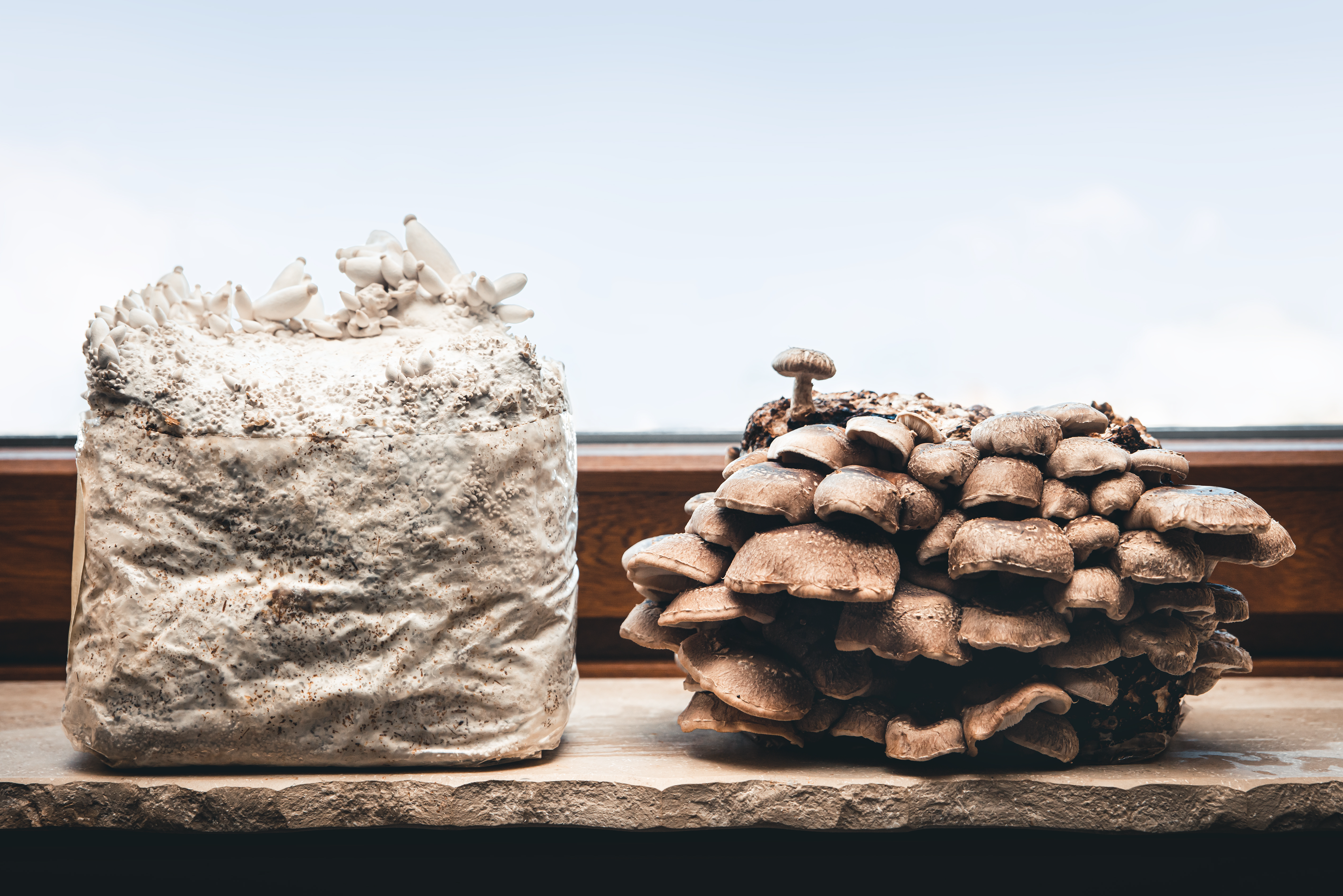
Mushrooms are seriously funky organisms. Maybe you recently watched Fantastic Fungi and now you’re as obsessed with mushrooms as we are. They may be squishy and slimy, but they are truly superb - in so many ways of the word.
Mushrooms are made up of many parts such as the cap, gills, ring, stem/stalk, and mycelium. The cap is what gives many mushrooms their umbrella-like shape and provides protection for the rest of the mushroom body. The gills appear right under the cap and are used to produce spores (otherwise known as little mushroom babies). The stalk is the vertical part of the mushroom that holds the cap and gills above ground, allowing the spores to be carried away and spread by the wind - creating fungi families across the forest floor. All of these parts combined are what make up the “fruiting body” of a mushroom. The fruiting body is the fleshy part of the mushroom that you would find above ground in a forest or on your dinner plate.
Mycelium, on the other hand, is a web of sprawling, interconnected fibers that exist below ground, supporting the mushroom “fruiting body” that is found above soil. Together, these components create the structural makeup of a mushroom and house the potent nutritional properties recognized by consumers today. While there is some debate about which part of the mushroom contains the highest concentration of nutrients, both have unique properties and health benefits. Some species contain different bioactive compounds in their fruiting bodies and mycelium and so both are being utilized to create different functional mushroom products.
However, at Odyssey, we decided to only utilize the fruiting body of different adaptogenic mushroom species during extraction for a number of reasons. The fruiting bodies of various mushroom species contain bioactive compounds (such as polysaccharides and carotenoids) as well as vital nutrients (i.e. protein, fiber, vitamins, and minerals) not found in mycelium. The fruiting body is home to various compounds that have antioxidant and anti-inflammatory properties. We looooove the beta-glucans - a form of fiber that lights up your immune system, making you feel your best.
Many mycelium based products, on the other hand, tout similar health benefits but have lower potency levels. Take for example, myceliated grain products. Many mycelium based products utilize a grain growing process where mycelium grows out on a grain substrate, creating an inseparable white mass. Eventually, both the grain and mycelium are harvested together - meaning the grain dilutes the mycelium product making it less potent. Many products using this type of production method will tout their “mushroom-based” products despite the minimal mushroom content in them. In fact, mushroom pioneer and expert Paul Stamets estimated that myceliated grain contains 60-70% grain.
When you drink Odyssey, you can find peace in knowing we are providing the best of the best. Potent, powerful and pretty darn good - we’ve got you covered.

